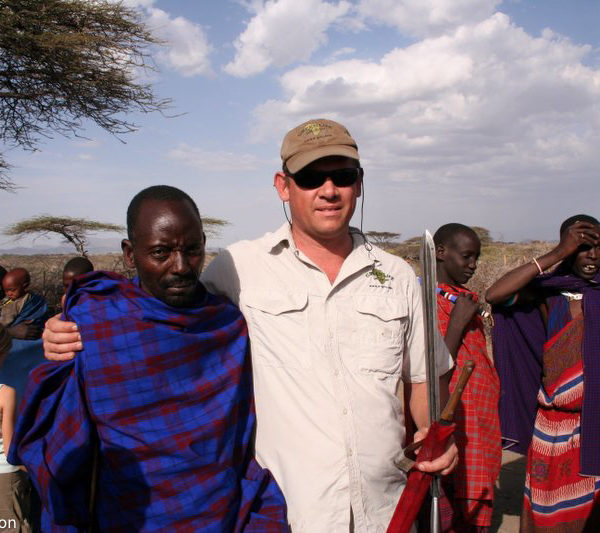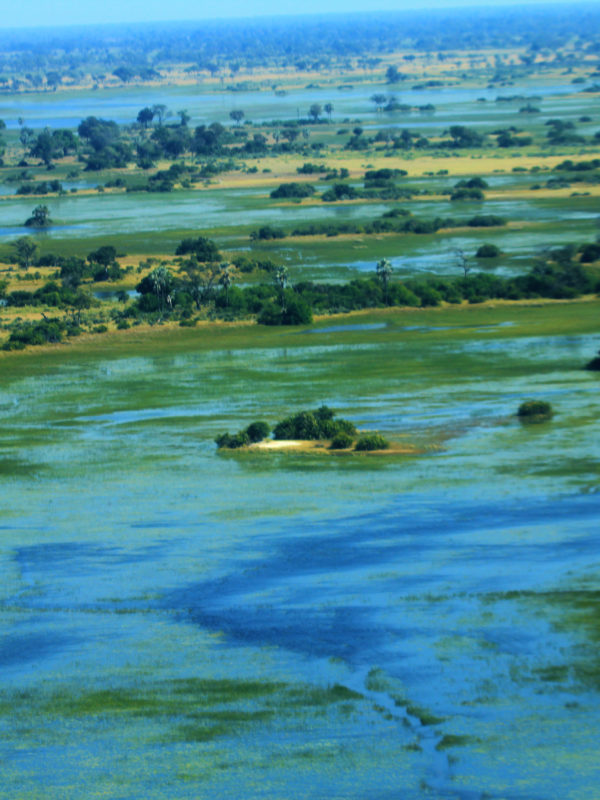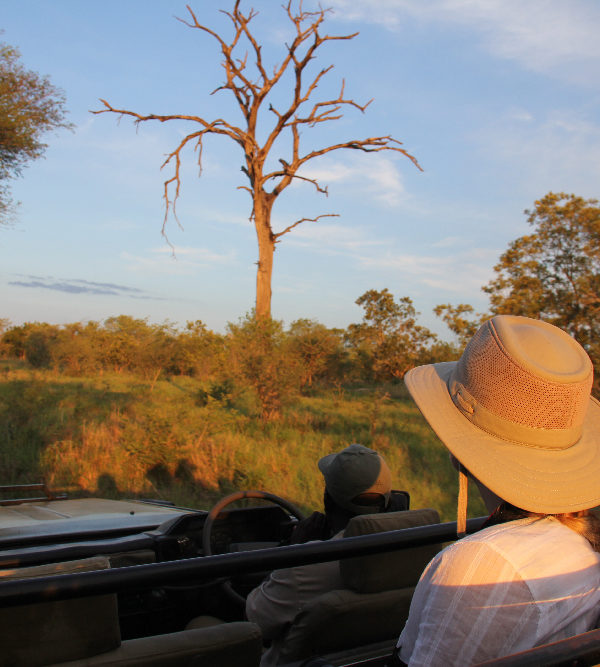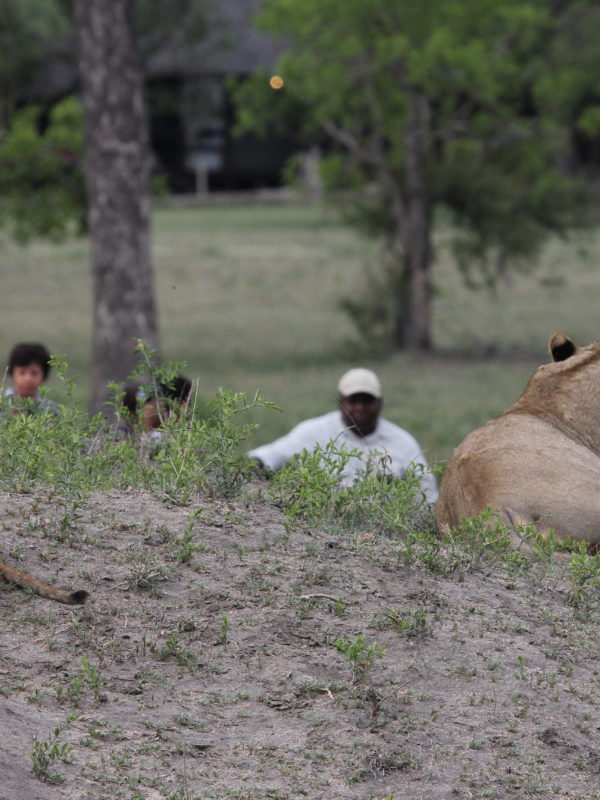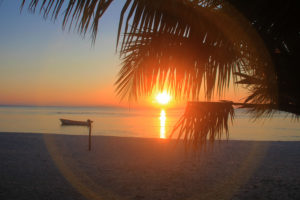Stunning sunsets are a distinctive feature of Kariba, as are the bleached skeletal trunks and bare branches of dead trees that were drowned the dam all those years ago. They make excellent perches for fish eagles, cormorants and other water birds.
Matusadona National Park lies along the southern shores of Lake Kariba and is bounded in the west by the Umi River and in the east by the dramatic Sanyati Gorge. It’s a suberb game viewing park with the opportunity to take game drives, walking safaris, boat and canoe excursions, making it an excellent all-round safari location.
ANIMALS AND BIRDS
Lake Kariba is teeming with crocodiles and you can see them sunbathing at intervals of 100 metres or so along the shore. There are so many crocs that the National Parks Board allow crocodile farms to collect eggs every October, as long as they return 2% of hatchlings back to the lake.
Kariba sunset
This is probably more than would naturally survive in the wild, so the crocodile population is extremely healthy. Villagers have to be very careful when collecting water or when fishing from the shore, as people and cows have often been taken by crocodiles. Swimming is not advised except in a swimming cage on the back of some of the larger houseboats.
Matusadona National Park is the finest safari location along the lake with the best of Lake Kariba’s water wildlife coupled with great inland wildlife viewing. Game viewing by boat near the shore is a wonderful experience and you will see large herds of elephant, buffalo and plenty of hippos and waterbuck. Further into the park roan and sable antelope, kudu, impala, lions and black rhino are often seen, but leopards are elusive. Walking safaris are very rewarding and fishing for tiger and bream is excellent.
Baboons are frequently seen on the paths leading to the falls and small antelopes and warthogs inhabit the rainforests that hug the edge of the falls. In the wildlife reserve, the pastures and tall riverine forests contain plenty of birds and a scattering of animals including some white rhino, elephants, giraffe, zebra, sable, eland, buffalo and impala.
SEASONS
Dry Season: it is dry from June to October and animals come to the lake to drink and graze along the banks. As the rain clouds build, October’s heat is oppressive and temperatures exceed 86°F (30°C). The dry season is the best time to visit.
Rainy Season: it rains intermittently from early November to the end of April and animals have no need to stay so close to the lake. The rainy season summer months are very hot and humid.
KARIBA & MATUSADONA SPECIALITIES
• Massive Nile crocodiles
• Swimming elephants
• Lakeshore lodges, houseboats and floating chalets
• Spectacular watery sunsets
• Masses of hippos
• Dead trees like sculptures
FACTS
Matusadona National Park is 543²miles (1,407km²).
Lake Kariba is 175 miles long (280km) and up to 20 miles wide (32km).
There is an overnight ferry from one end of Lake Kariba to the other, which takes 22 hours.
Operation Noah saved over 5,000 animals of 35 different species from drowning when Lake Kariba was formed and deposited many of them in what is now Matusadona National Park.
This is a malarial area.

